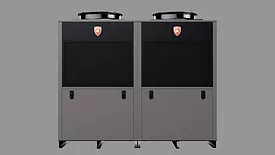Home » heat pumps
Articles Tagged with ''heat pumps''
Heat pumps are redefining what’s possible in commercial and industrial efficiency.
Read More
Freedom Heat Pumps appoints new managing director
The UK-based company has appointed Graham McCracken to the role.
October 3, 2025
Lochinvar 208V Veritus Air Source heat pump water heater
Lochinvar expands its Veritus heat pump water heater line with a new 208V model designed to meet the needs of diverse commercial applications.
September 23, 2025
Fujitsu AIRSTAGE J-7S VRF heat pump
Fujitsu introduced a new line of VRF heat pumps.
June 27, 2025
ASHRAE announces dynamic technical program for 2025 Annual Conference in Phoenix
Over 80 sessions and 10 ALI courses planned – early bird registration open through April 28.
April 26, 2025
Renewable Heating Design | John Siegenthaler
Versatility in direct-to-load systems, part two
Going direct.
April 8, 2025
Demystifying ground source heat pumps
A guide to retrofit and new construction geothermal heat pumps.
April 7, 2025
Mission Geo celebrates International Geothermal Month
Public awareness and outreach effort spotlights the ground source heat pump.
April 4, 2025
Fujitsu General America mini-split heat pump line
Fujitsu General America expands H-Series mini-split heat pump line.
April 3, 2025
Hydronics Workshop | John Siegenthaler
Build what you need: Availability and customization of heat pump systems opens doors of possibilities
April 2, 2025
Keep your content unclogged with our newsletters!
Stay in the know on the latest plumbing & piping industry trends.
JOIN TODAY!Copyright ©2025. All Rights Reserved BNP Media.
Design, CMS, Hosting & Web Development :: ePublishing













